Organizational Behavior > TEST BANK > Organizational Behaviour Concepts, Controversies, Applications, 8th Canadian Edition by Langton Test (All)
Organizational Behaviour Concepts, Controversies, Applications, 8th Canadian Edition by Langton Test Bank
Document Content and Description Below
Test Bank for Organizational Behaviour Concepts, Controversies, Applications, 8th Canadian Edition ,8CE by Nancy Langton,Stephen P. Robbins,Timothy A. Judge TEST BANK ISBN-13: 9780134645858 FULL CHA... PTERS INCLUDED 1 What Is Organizational Behaviour? Learning Outcomes Introduction: What Is Organizational Behaviour? The Importance of Interpersonal Skills Defining Organizational Behaviour What Do We Mean by Organization? OB Is for Everyone Complementing Intuition with Systematic Study Big Data Disciplines That Contribute to the OB Field The Building Blocks of OB Psychology Social Psychology Sociology Anthropology The Rigour of OB OB Has Few Absolutes OB Takes a Contingency Approach Challenges and Opportunities in the Canadian Workplace Economic Pressures Continuing Globalization Understanding Workforce Diversity Customer Service People Skills Networked Organizations Social Media Enhancing Employee Well-Being at Work Creating a Positive Work Environment Ethical Behaviour Coming Attractions: Developing an OB Model An Overview Inputs Processes Outcomes Attitudes and Stress Task Performance Organizational Citizenship Behaviour Withdrawal Behaviour Group Cohesion Group Functioning Productivity Survival Summary OB at Work For Review For Managers For You The Battle of the Texts Point Counterpoint Breakout Group Exercises Experiential Exercise Managing the OB Way Ethical Dilemma There’s a Drone in Your Soup Questions From Concepts to Skills Developing Interpersonal Skills Practising Skills Questions Reinforcing Skills 2 Perception, Personality, and Emotions Learning Outcomes Introduction: Perception, Personality, and Emotions Perception Factors That Influence Perception The Perceiver The Target The Situation Perceptual Errors Attribution Theory Distinctiveness Consensus Consistency How Attributions Get Distorted Selective Perception Halo Effect Contrast Effects Stereotyping Why Do Perception and Judgment Matter? Employment Interviews Performance Expectations Performance Evaluations Personality What Is Personality? Defining Personality Measuring Personality Personality Determinants Personality Traits The Myers-Briggs Type Indicator The Big Five Personality Model Conscientiousness Emotional Stability Extraversion Openness to Experience Agreeableness The Dark Triad Machiavellianism Narcissism Psychopathy Other Traits Other Personality Attributes That Influence OB Core Self-Evaluation Self-Monitoring Proactive Personality Situation Strength Theory Emotions What Are Emotions and Moods? Moral Emotions Choosing Emotions: Emotional Labour Why Should We Care About Emotions in the Workplace? Emotional Intelligence Negative Workplace Emotions Emotion Regulation Emotion Regulation Techniques Perception Attributions Personality Emotions Summary OB at Work For Review For Managers For You Sometimes Yelling Is for Everyone’s Good Point Counterpoint Breakout Group Exercises Experiential Exercise Who Can Catch a Liar? Ethical Dilemma Happiness Coaches for Employees Questions From Concepts to Skills Reading Emotions Practising Skills Reinforcing Skills 3 Values, Attitudes, and Diversity in the Workplace Learning Outcomes Introduction: Values, Attitudes, and Diversity in the Workplace Values Rokeach Value Survey Hodgson’s General Moral Principles Assessing Cultural Values Hofstede’s Framework for Assessing Cultures The GLOBE Framework for Assessing Cultures Values in the Canadian Workplace Generational Differences Cultural Differences Attitudes Job Satisfaction What Causes Job Satisfaction? Job Conditions Personality Pay Job Satisfaction and Productivity Job Satisfaction and Organizational Citizenship Behaviour Job Satisfaction and Customer Satisfaction Life Satisfaction How Employees Can Express Dissatisfaction Counterproductive Work Behaviour (CWB) Absenteeism Turnover Organizational Commitment Job Involvement Perceived Organizational Support Employee Engagement Managing Diversity in the Workplace Effective Diversity Programs Cultural Intelligence Is Job Satisfaction a North American Concept? Are Employees in Western Cultures More Satisfied with Their Jobs? Is Diversity Managed Differently across Cultures? Summary OB at Work For Review For Managers For You Millennials Have Inflated Images of Themselves Compared to Their Parents Point Counterpoint Breakout Group Exercises Experiential Exercise Feeling Excluded Ethical Dilemma Tell-All Websites Questions From Concepts to Skills Changing Attitudes Practising Skills Questions Reinforcing Skills OB on the Edge Stress @ Work Introduction: OB on the Edge: Stress @ Work Are We Overstressed? Jobs and Stress Levels What Is Stress? Causes of Stress Consequences of Stress Why Do Individuals Differ in Their Experiences of Stress? How Do We Manage Stress? Individual Approaches Organizational Approaches Research Exercises Your Perspective Want to Know More? 4 Theories of Motivation Learning Outcomes Introduction: Theories of Motivation What Is Motivation? Needs Theories of Motivation Maslow’s Hierarchy of Needs Theory Two-Factor Theory McClelland’s Theory of Needs Summarizing Needs Theories Process Theories of Motivation Expectancy Theory Effort–Performance Relationship Performance–Rewards Relationship Rewards–Personal Goals Relationship Expectancy Theory in the Workplace The Importance of Providing Performance Feedback Goal-Setting Theory How Does Goal Setting Motivate? Self-Efficacy Theory Reinforcement Theory Methods of Shaping Behaviour Schedules of Reinforcement Responses to the Reward System Equity Theory To Whom Do We Compare Ourselves? What Happens When We Feel Treated Inequitably? Fair Process and Treatment Self-Determination Theory Extrinsic vs. Intrinsic Rewards Increasing Intrinsic Motivation Motivation for Whom? Job Engagement Putting It All Together Needs Theories Goal-Setting Theory Equity Theory and Fairness Justice Intrinsic and Extrinsic Motivation Cross-Cultural Consistencies Summary OB at Work For Review For Managers For You Goals Get You to Where You Want to Be Point Counterpoint Breakout Group Exercises Experiential Exercise Organizational Justice Ethical Dilemma The New GPA Questions From Concepts to Skills Setting Goals Practising Skills Reinforcing Skills 5 Motivation in Action Learning Outcomes Introduction: Motivation in Action From Theory to Practice: The Role of Money Creating Effective Reward Systems What to Pay: Establishing a Pay Structure How to Pay: Rewarding Individuals through Variable-Pay Programs Individual-Based Incentives Piece-Rate Wages Merit-Based Pay Bonuses Organizational-Based Incentives Profit-Sharing Plans Employee Stock Ownership Plans Flexible Benefits: Developing a Benefits Package Intrinsic Rewards: Employee Recognition Programs Beware the Signals That Are Sent by Rewards Motivating by Job Redesign The Job Characteristics Model Motivating Potential Score Job Redesign in the Canadian Context: The Role of Unions How Can Jobs Be Redesigned? Job Rotation Relational Job Design Alternative Work Arrangements Flextime Job Sharing Telecommuting Employee Involvement and Participation Examples of Employee Involvement Programs Participative Management Representative Participation Linking Employee Involvement Programs and Motivation Theories Motivation: Putting It All Together Variable Pay Flexible Benefits Job Characteristics and Job Enrichment Telecommuting Employee Involvement Summary OB at Work For Review For Managers For You “Face-Time” Matters Point Counterpoint Breakout Group Exercises Experiential Exercise Analyzing and Redesigning Jobs Ethical Dilemma Are CEOs Paid Too Much? From Concepts to Skills Designing Enriched Jobs Practising Skills Reinforcing Skills 6 Groups and Teamwork Learning Outcomes Introduction: Groups and Teamwork Teams vs. Groups: What Is the Difference? Why Have Teams Become So Popular? Types of Teams Problem-Solving Teams Self-Managed Teams Cross-Functional Teams Virtual Teams Multiteam Systems From Individual to Team Member Roles Role Conflict Role Ambiguity Norms The “How” and “Why” of Norms Conformity Positive Norms and Group Outcomes Negative Norms and Group Outcomes Stages of Group and Team Development The Five-Stage Model Putting the Five-Stage Model into Perspective The Punctuated-Equilibrium Model Phase 1 Phase 2 Applying the Punctuated-Equilibrium Model Creating Effective Teams Context Adequate Resources Leadership and Structure Climate of Trust Performance Evaluation and Rewards Composition Abilities of Members Personality of Members Allocation of Roles Diversity of Members Cultural Differences Size of Teams Members’ Preference for Teamwork Team Processes Common Plan and Purpose Specific Goals Team Efficacy Team Identity Team Cohesion Mental Models Conflict Levels Social Loafing Beware! Teams Are Not Always the Answer Team Cultural Diversity and Team Performance Group Cohesiveness Summary OB at Work For Review For Managers For You To Get the Most Out of Teams, Empower Them Point Counterpoint Breakout Group Exercises Experiential Exercise The Paper Tower Exercise Ethical Dilemma Dealing with Shirkers Questions From Concepts to Skills Conducting a Team Meeting Practising Skills Reinforcing Skills OB on the Edge Trust Introduction: OB on the Edge: Trust What Is Trust? What Determines Trust? Basic Principles of Trust What Can Leaders Do to Increase Trust? Building Team Trust The Need to Prevent Lying Research Exercises Your Perspective Want to Know More? 7 Communication Learning Outcomes Introduction: Communication The Communication Process Choosing a Channel Barriers to Effective Communication Filtering Selective Perception Information Overload Emotions Language Silence Lying Organizational Communication Direction of Communication Downward Communication Upward Communication Lateral Communication Small-Group Networks The Grapevine Modes of Communication Oral Communication Meetings Videoconferencing and Conference Calling Telephone Written Communication Letters PowerPoint Email Instant Messaging Text Messaging Social Media Apps Blogs Others Nonverbal Communication Cultural Barriers to Communication Cultural Context A Cultural Guide Summary OB at Work For Review For Managers For You Employees’ Social Media Presence Should Matter to Managers Point Counterpoint Breakout Group Exercises Experiential Exercise An Absence of Nonverbal Communication Ethical Dilemma BYOD Questions From Concepts to Skills Effective Listening Practising Skills Reinforcing Skills 8 Power and Politics Learning Outcomes Introduction: Power and Politics A Definition of Power Bases of Power Formal Power Coercive Power Reward Power Legitimate Power Personal Power Expert Power Referent Power Which Bases of Power Are Most Effective? Dependence: The Key to Power The General Dependence Postulate What Creates Dependence? Importance Scarcity Nonsubstitutability Influence Tactics About Influence Tactics Applying Influence Tactics How Power Affects People Power Variables Harassment: Unequal Power in the Workplace Workplace Bullying Sexual Harassment Empowerment: Giving Power to Employees Definition of Empowerment Politics: Power in Action Definition of Political Behaviour The Reality of Politics Impression Management The Ethics of Behaving Politically Views on Empowerment Preference for Influence Tactics Summary OB at Work For Review For Managers For You Everyone Wants Power Point Counterpoint Breakout Group Exercises Experiential Exercise Comparing Influence Tactics Ethical Dilemma How Much Should You Defer to Those in Power? Questions From Concepts to Skills Politicking Practising Skills Reinforcing Skills 9 Conflict and Negotiation Learning Outcomes Introduction: Conflict and Negotiation Conflict Defined Functional vs. Dysfunctional Conflict Types of Conflict Loci of Conflict Sources of Conflict Communication Structure Personal Variables Conflict Resolution Conflict Management Strategies Based on Dual Concern Theory What Can Individuals Do to Manage Conflict? Resolving Personality Conflicts Conflict Outcomes Negotiation Bargaining Strategies Distributive Bargaining Integrative Bargaining How to Negotiate Developing a Strategy Defining Ground Rules Clarifying and Justifying Bargaining and Problem Solving Achieving Closure and Implementation Individual Differences in Negotiation Effectiveness Personality Traits in Negotiation Moods/Emotions in Negotiation Gender Differences in Negotiation Negotiating in a Social Context Third-Party Negotiations Mediator Arbitrator Conciliator Conflict Resolution and Culture Cultural Differences in Negotiating Style Culture, Negotiations, and Emotions Summary OB at Work For Review For Managers For You Pro Sports Strikes Are Caused by Greedy Owners Point Counterpoint Breakout Group Exercises Experiential Exercise A Negotiation Role Play Ethical Dilemma The Lowball Applicant Questions From Concepts to Skills Negotiating Practising Skills Reinforcing Skills OB on the Edge Workplace Bullying Introduction: OB on the Edge: Workplace Bullying What Is Happening in Our Workplaces? What Do We Know about Workplace Bullying? Workplace Violence What Causes Incivility (and Worse) in the Workplace? The Psychological Contract The Toxic Organization What Are the Effects of Incivility and Toxicity in the Workplace? Legislation to Prevent Bullying Research Exercises Your Perspective Want to Know More? 10 Organizational Culture Learning Outcomes Introduction: Organizational Culture What Is Organizational Culture? Culture Is a Descriptive Term Do Organizations Have Uniform Cultures? Strong vs. Weak Cultures Culture vs. Formalization What Do Cultures Do? Culture’s Functions Culture Creates Climate The Ethical Dimension of Culture Culture and Sustainability Culture and Innovation Culture as a Liability Institutionalization Barriers to Change Barriers to Diversity Strengthening Dysfunctions Barriers to Acquisitions and Mergers Creating and Sustaining an Organization’s Culture How a Culture Begins Keeping a Culture Alive Selection Top Management Socialization The Prearrival Stage The Encounter Stage The Metamorphosis Stage How Employees Learn Culture Stories Rituals Material Symbols Language Changing Organizational Culture Creating an Ethical Organizational Culture Creating a Positive Organizational Culture Building on Employee Strengths Rewarding More Often Than Punishing Emphasizing Vitality and Growth Limits of Positive Culture Summary OB at Work For Review For Managers For You Organizations Should Strive to Create a Positive Organizational Culture Point Counterpoint Breakout Group Exercises Experiential Exercise Greeting Newcomers Design a Program Questions Ethical Dilemma Culture of Deceit Questions From Concepts to Skills How to “Read” an Organization’s Culture Practising Skills Reinforcing Skills 11 Leadership Learning Outcomes Introduction: Leadership What Is Leadership? Leadership as Supervision Trait Theories: Are Leaders Different from Others? Behavioural Theories: Do Leaders Behave in Particular Ways? The Ohio State Studies The Michigan Studies Summary of Trait Theories and Behavioural Theories Contingency Theories: Does the Situation Matter? The Fiedler Contingency Model Hersey and Blanchard’s Situational Leadership® Path-Goal Theory Inspirational Leadership Charismatic Leadership What Is Charismatic Leadership? How Charismatic Leaders Influence Followers The Dark Side of Charismatic Leadership Transactional and Transformational Leadership Full Range of Leadership Model How Transformational Leadership Works Transformational vs. Charismatic Leadership Responsible Leadership Authentic Leadership Ethical Leadership Servant Leadership Mentoring Challenges to Our Understanding of Leadership Leadership as an Attribution Substitutes for and Neutralizers of Leadership Online Leadership How to Lead Servant Leadership Summary OB at Work For Review For Managers For You Heroes Are Made, Not Born Point Counterpoint Breakout Group Exercises Experiential Exercise What Is Leadership? Ethical Dilemma Smoking Success Questions From Concepts to Skills Practising to be Charismatic Practising Skills Reinforcing Skills 12 Decision Making, Creativity, and Ethics Learning Outcomes Introduction: Decision Making, Creativity, and Ethics How Should Decisions Be Made? The Rational Decision-Making Process The Six-Step Rational Model Assumptions of the Model How Do Individuals Actually Make Decisions? Bounded Rationality in Considering Alternatives Intuition Judgment Shortcuts Overconfidence Bias Anchoring Bias Confirmation Bias Availability Bias Escalation of Commitment Randomness Error Risk Aversion Hindsight Bias Group Decision Making Groups vs. the Individual Strengths of Group Decision Making Weaknesses of Group Decision Making Effectiveness and Efficiency Groupthink and Groupshift Groupthink Groupshift or Group Polarization Group Decision-Making Techniques Interacting Groups Brainstorming Nominal Group Technique Creativity in Organizational Decision Making Creative Behaviour Causes of Creative Behaviour Creative Potential Intelligence and Creativity Personality and Creativity Expertise and Creativity Ethics and Creativity Creative Environment Creative Outcomes (Innovation) What About Ethics in Decision Making? Four Ethical Decision Criteria Making Ethical Decisions Decision Making Creativity Ethics Summary OB at Work For Review For Managers For You People Are More Creative When They Work Alone Point Counterpoint Breakout Group Exercises Experiential Exercise Wilderness Survival Your Task Group Task Scoring Your Answers Discussion Questions Ethical Dilemma Five Ethical Decisions: What Would You Do? From Concepts to Skills Solving Problems Creatively Practising Skills Reinforcing Skills OB on the Edge Spirituality in the Workplace Introduction: Spirituality in the Workplace What Is Spirituality? Why Spirituality Now? Spirituality and Mindfulness Characteristics of a Spiritual Organization Benevolence Strong Sense of Purpose Trust and Respect Humanistic Work Practices Toleration of Employee Expression Achieving a Spiritual Organization Criticisms of Spirituality Research Exercises Your Perspective Want to Know More? 13 Organizational Structure Learning Outcomes Introduction: Organizational Structure What Is Organizational Structure? Work Specialization Departmentalization Functional Departmentalization Product Departmentalization Geographical Departmentalization Process Departmentalization Customer Departmentalization Chain of Command Span of Control Centralization and Decentralization Formalization Boundary Spanning Common Organizational Designs The Simple Structure The Bureaucracy Strengths of Bureaucracy Weaknesses of Bureaucracy The Functional Structure The Divisional Structure The Matrix Structure Advantages of a Matrix Structure Disadvantages of a Matrix Structure Alternate Design Options The Virtual Structure The Team Structure The Circular Structure The Leaner Organization: Downsizing Why Do Structures Differ? Organizational Strategies Innovation Strategy Cost-Minimization Strategy Imitation Strategy Organizational Size Technology Variations in Technology Environment Institutions Organizational Designs and Employee Behaviour Culture and Organizational Structure Culture and Employee Structure Preferences Culture and the Impact of Downsizing Summary OB at Work For Review For Managers For You The End of Management Point Counterpoint Breakout Group Exercises Experiential Exercise The Sandwich Shop A simple structure A bureaucracy A virtual structure Debriefing Ethical Dilemma Post-Millennium Tensions in the Flexible Organization Questions From Concepts to Skills Delegating Authority Practising Skills Reinforcing Skills 14 Organizational Change Learning Outcomes Introduction: Organizational Change Forces for Change Opportunities for Change Change Agents Approaches to Managing Change Lewin’s Three-Step Model Kotter’s Eight-Step Plan for Implementing Change Action Research Appreciative Inquiry Resistance to Change Individual Resistance Organizational Resistance Overcoming Resistance to Change The Politics of Change Creating a Culture for Change Managing Paradox Stimulating a Culture of Innovation Definition of Innovation Sources of Innovation Idea Champions and Innovation Creating a Learning Organization What Is a Learning Organization? [Show More]
Last updated: 1 year ago
Preview 1 out of 547 pages
Instant download

Buy this document to get the full access instantly
Instant Download Access after purchase
Add to cartInstant download
Reviews( 0 )
Document information
Connected school, study & course
About the document
Uploaded On
Nov 04, 2022
Number of pages
547
Written in
Additional information
This document has been written for:
Uploaded
Nov 04, 2022
Downloads
0
Views
129

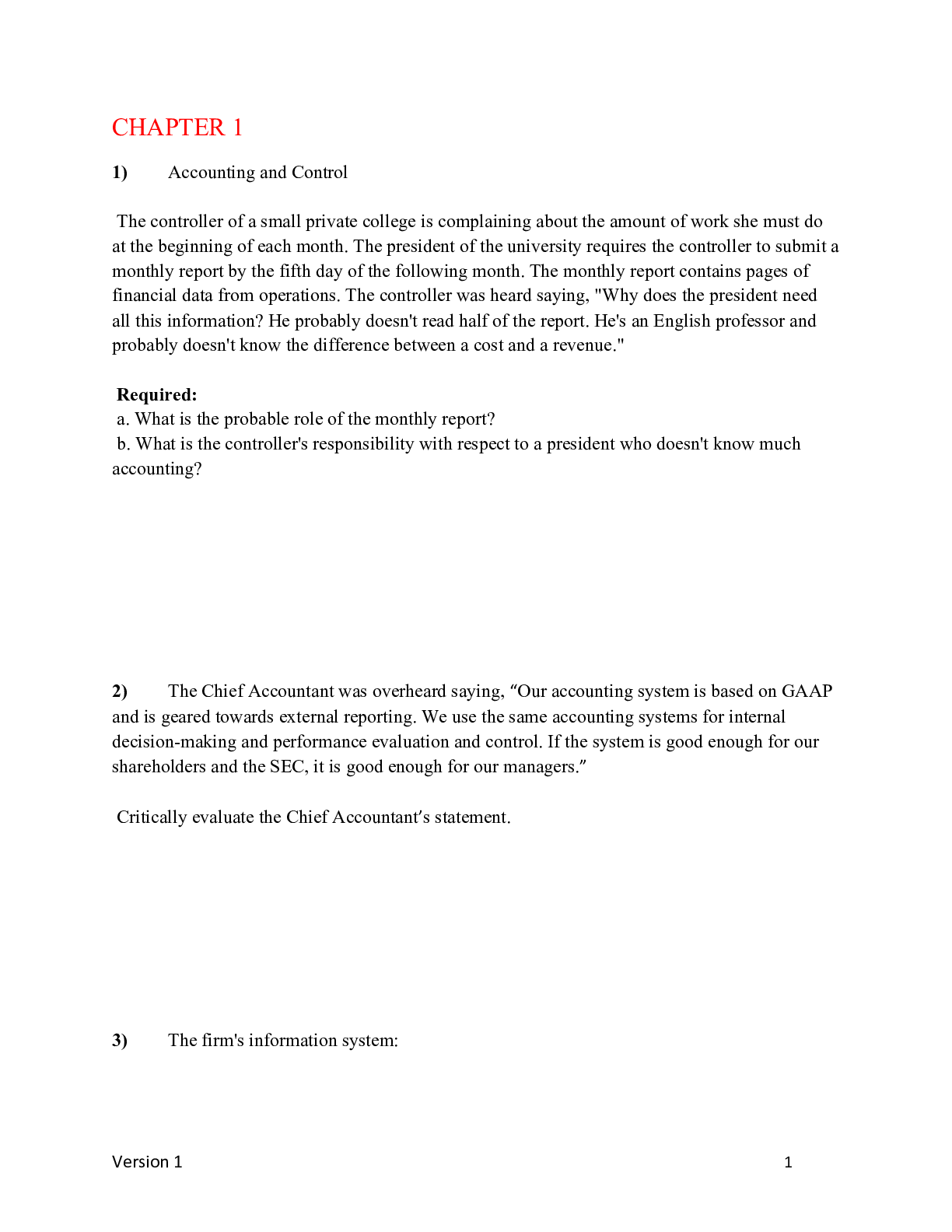
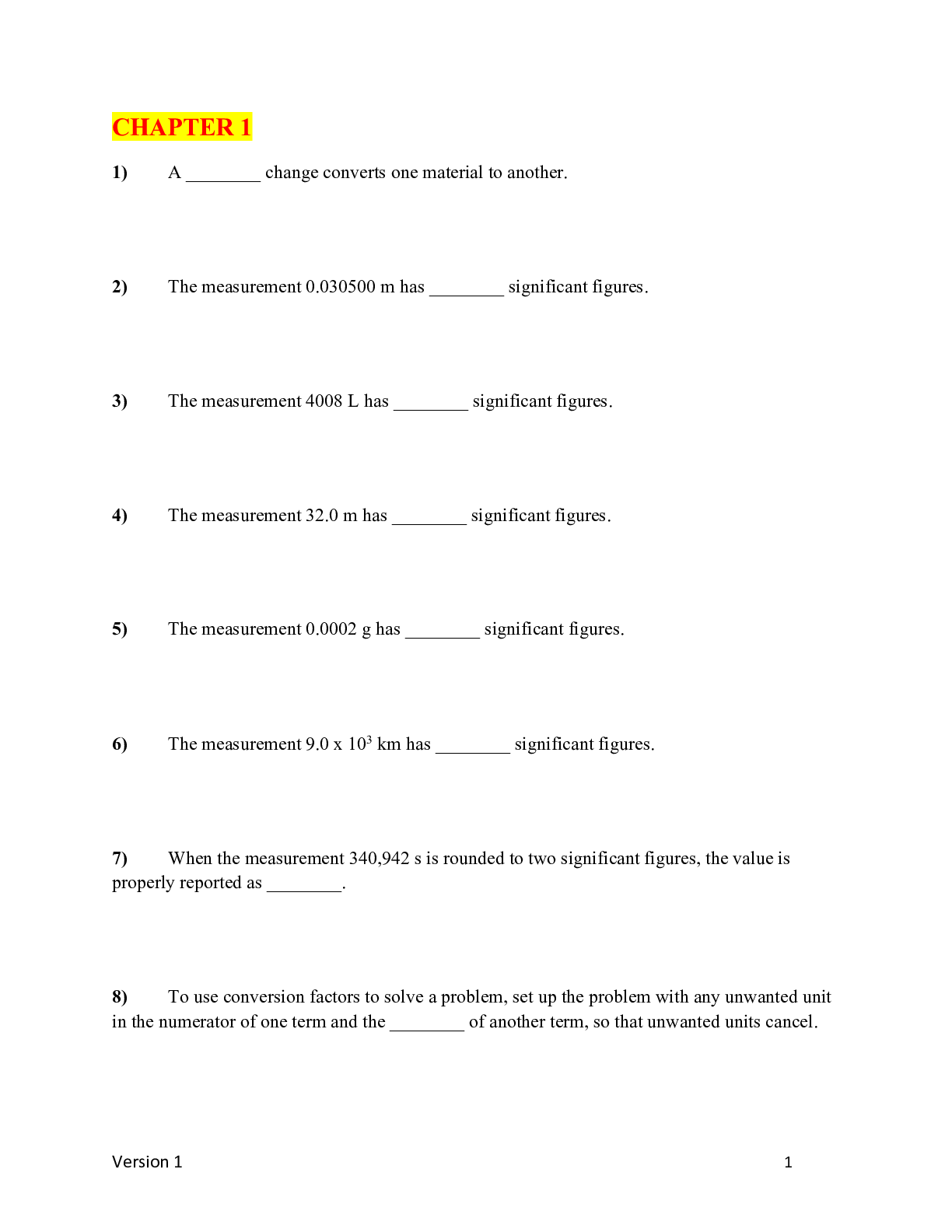
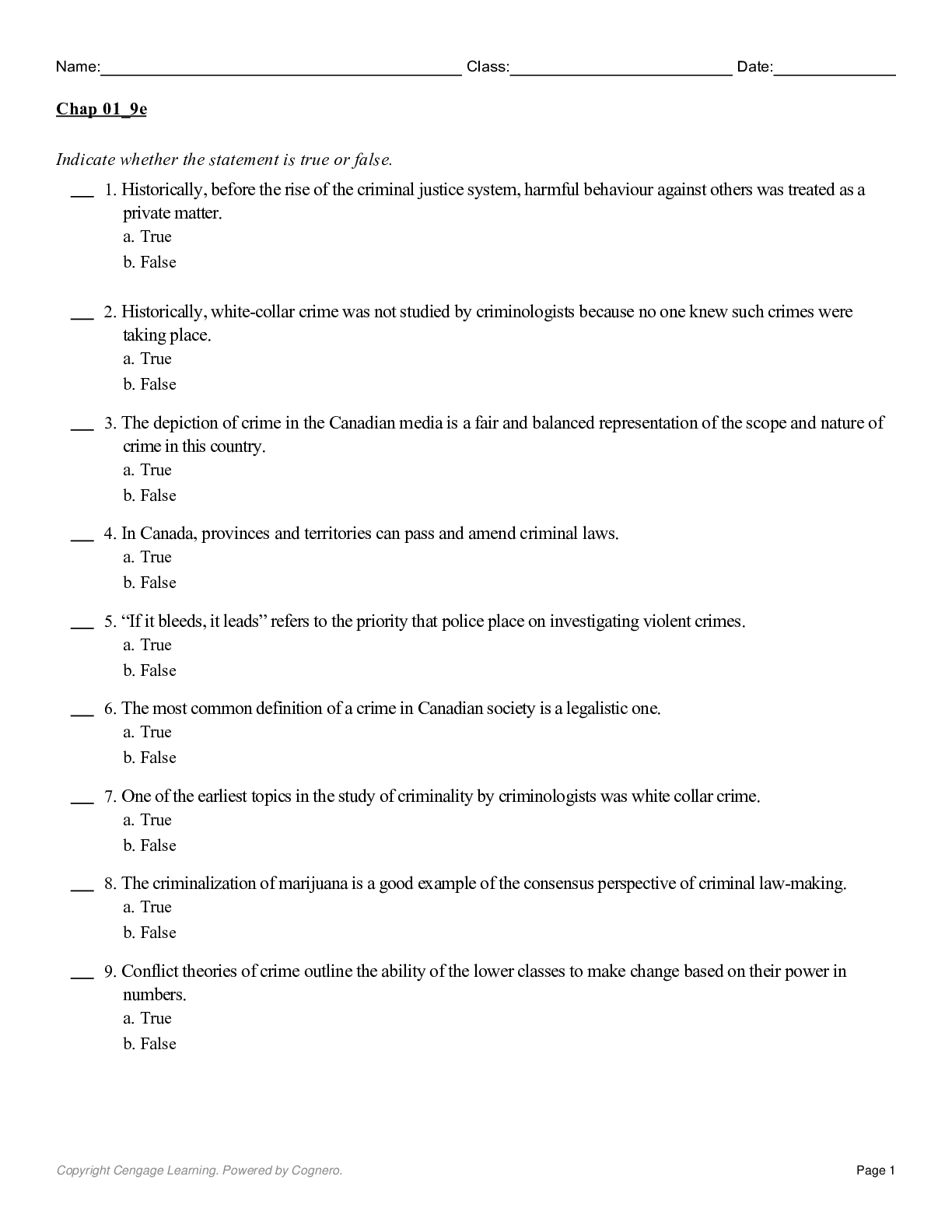



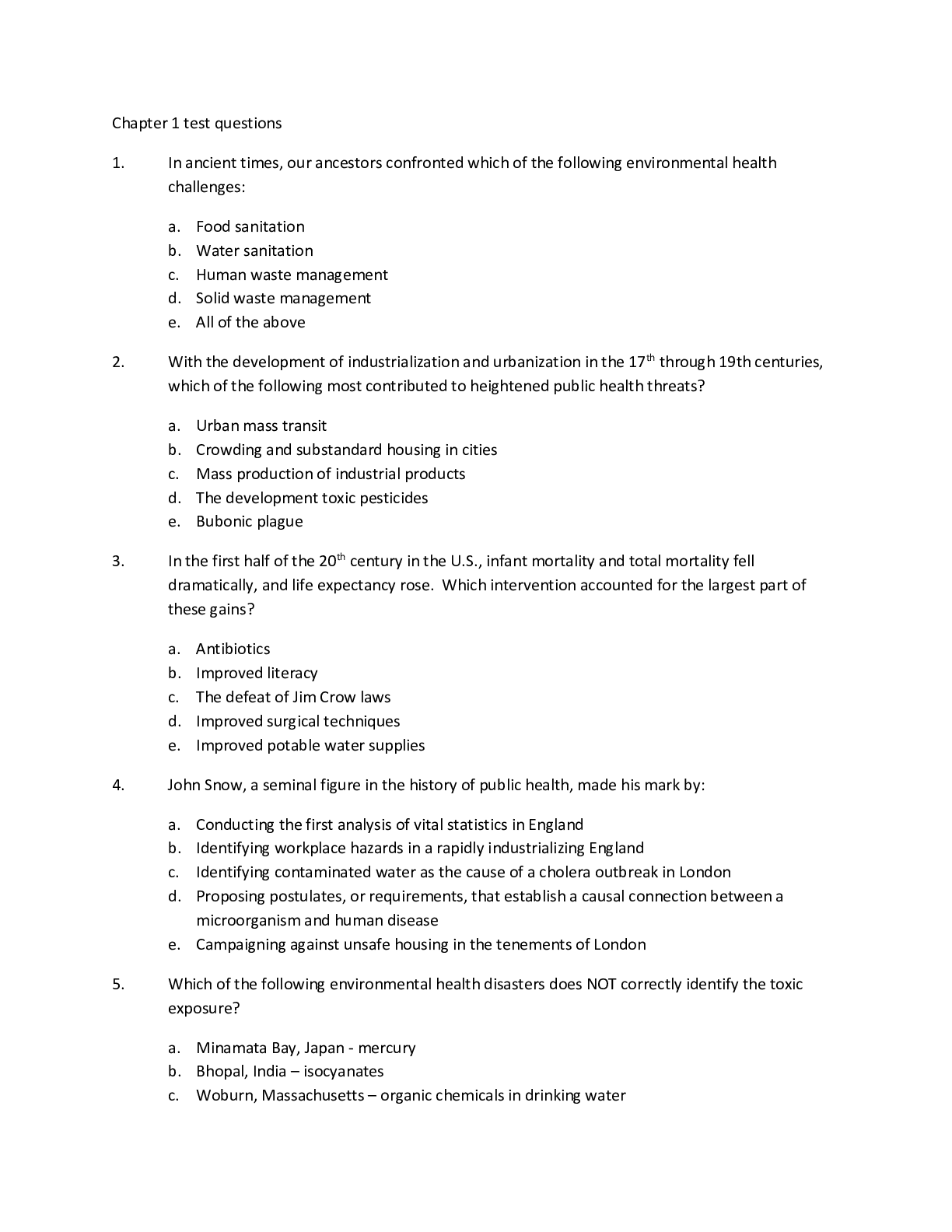
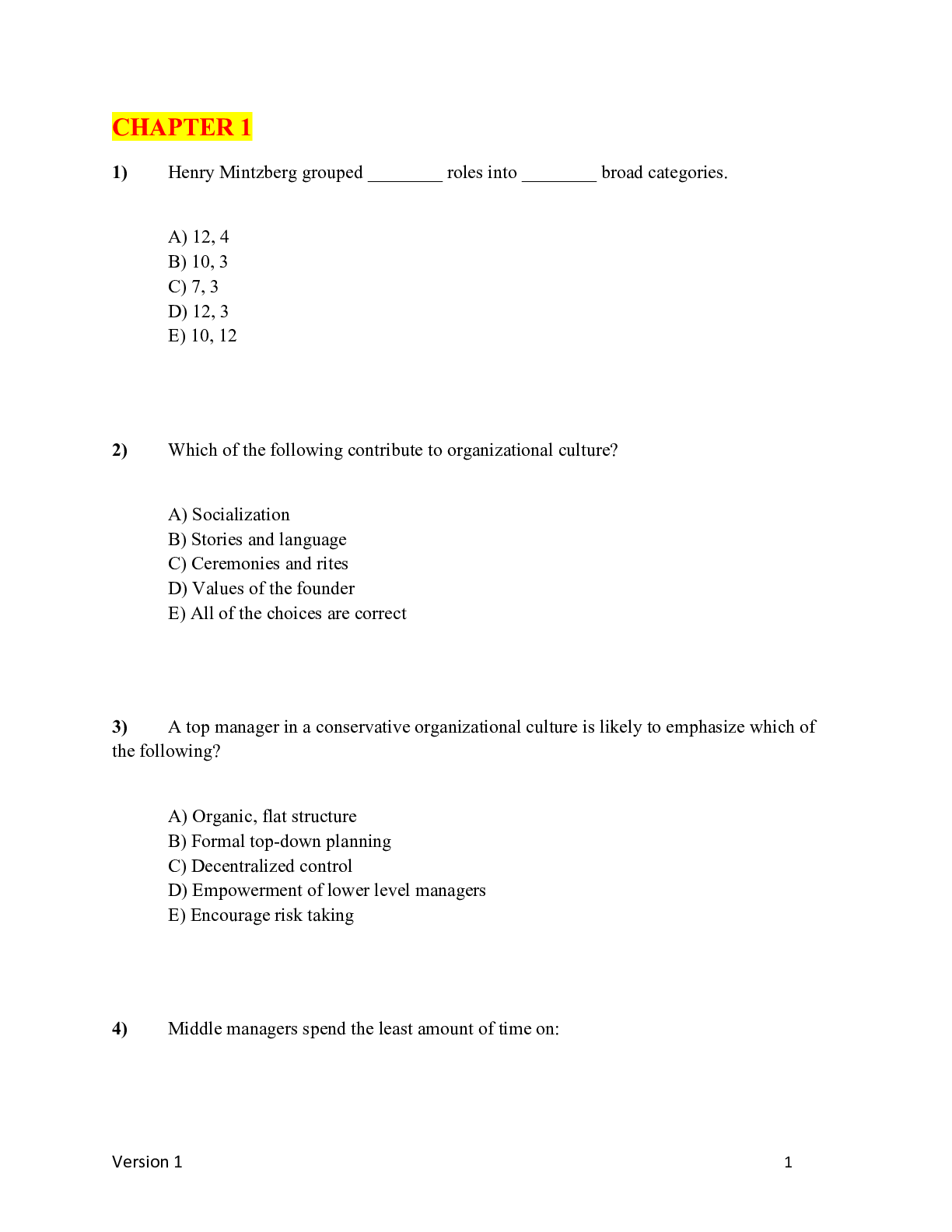


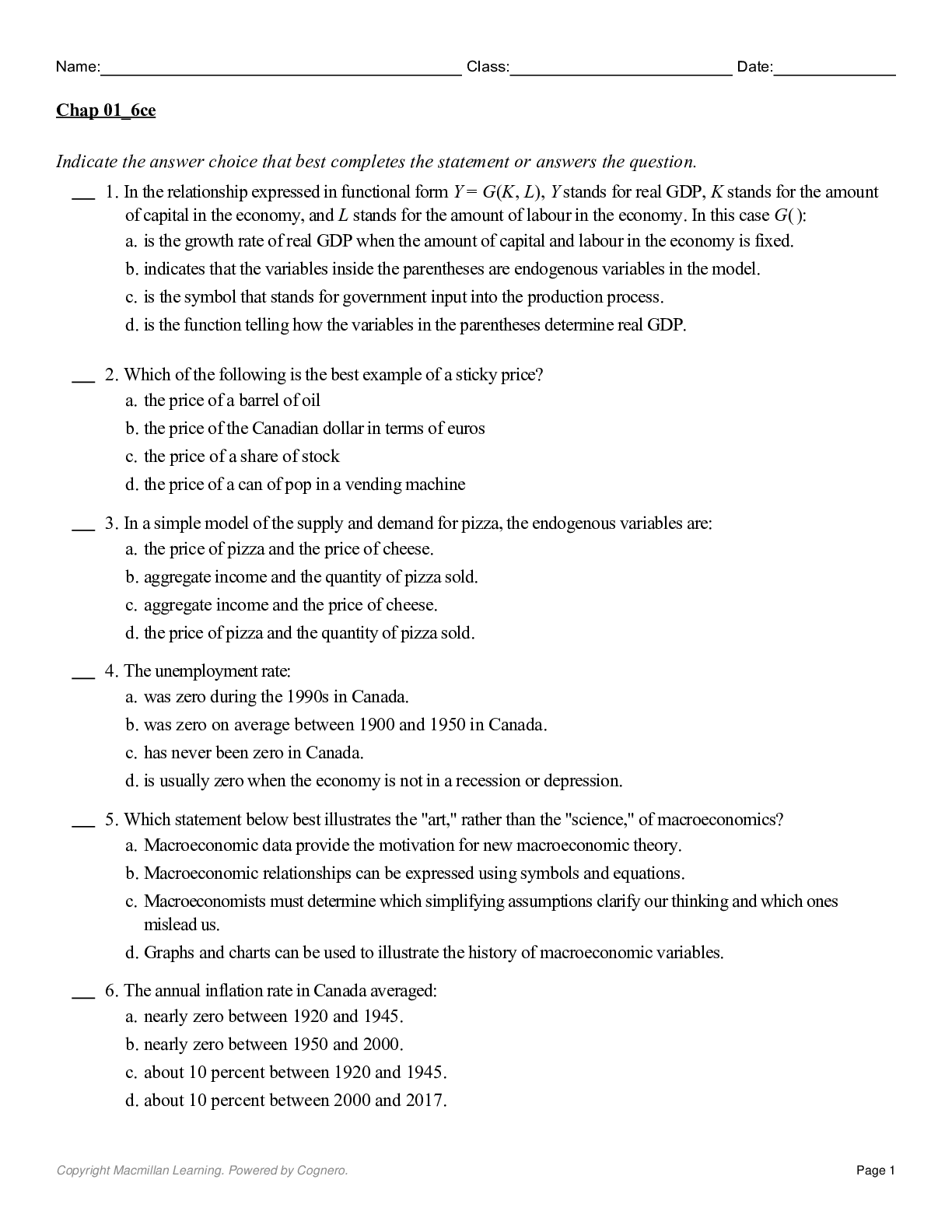

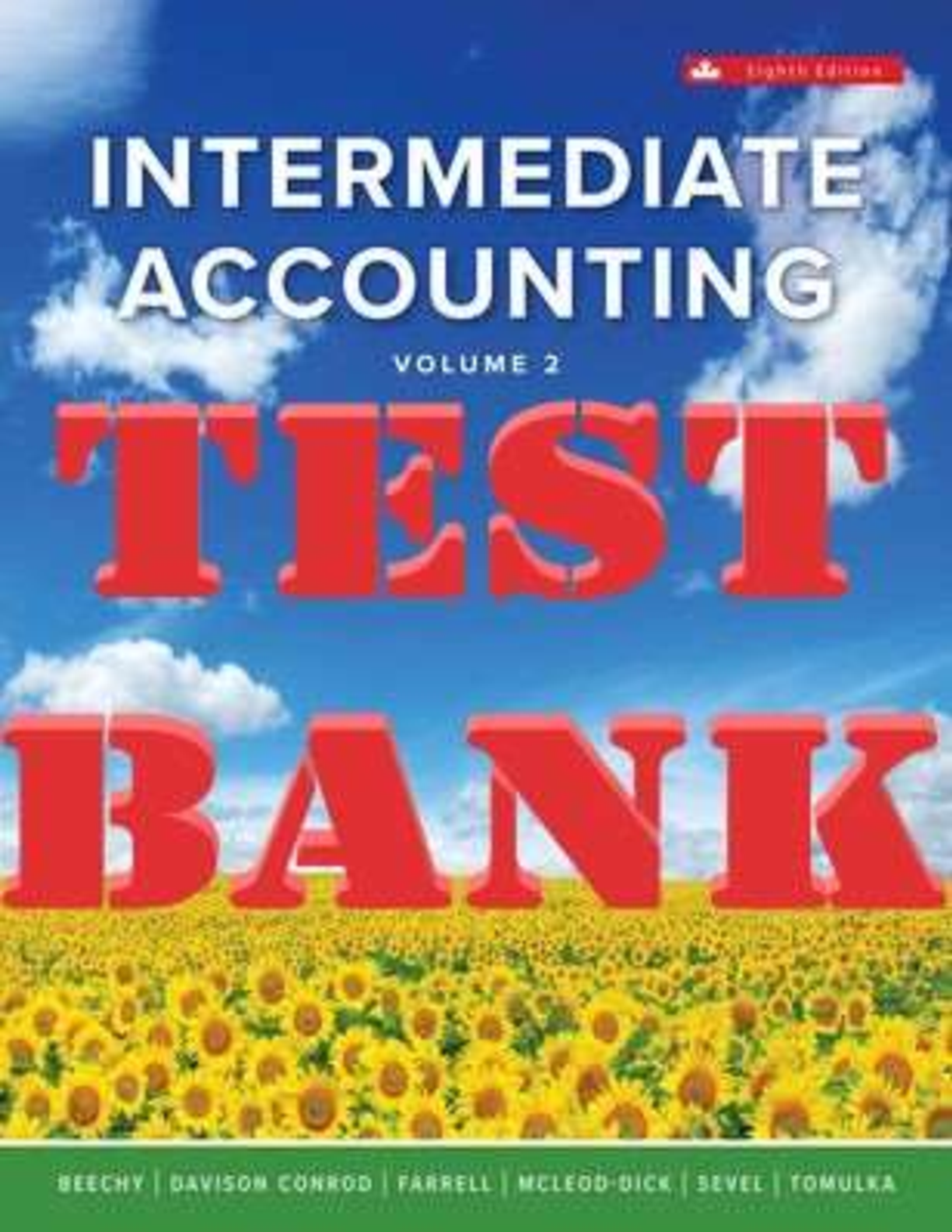
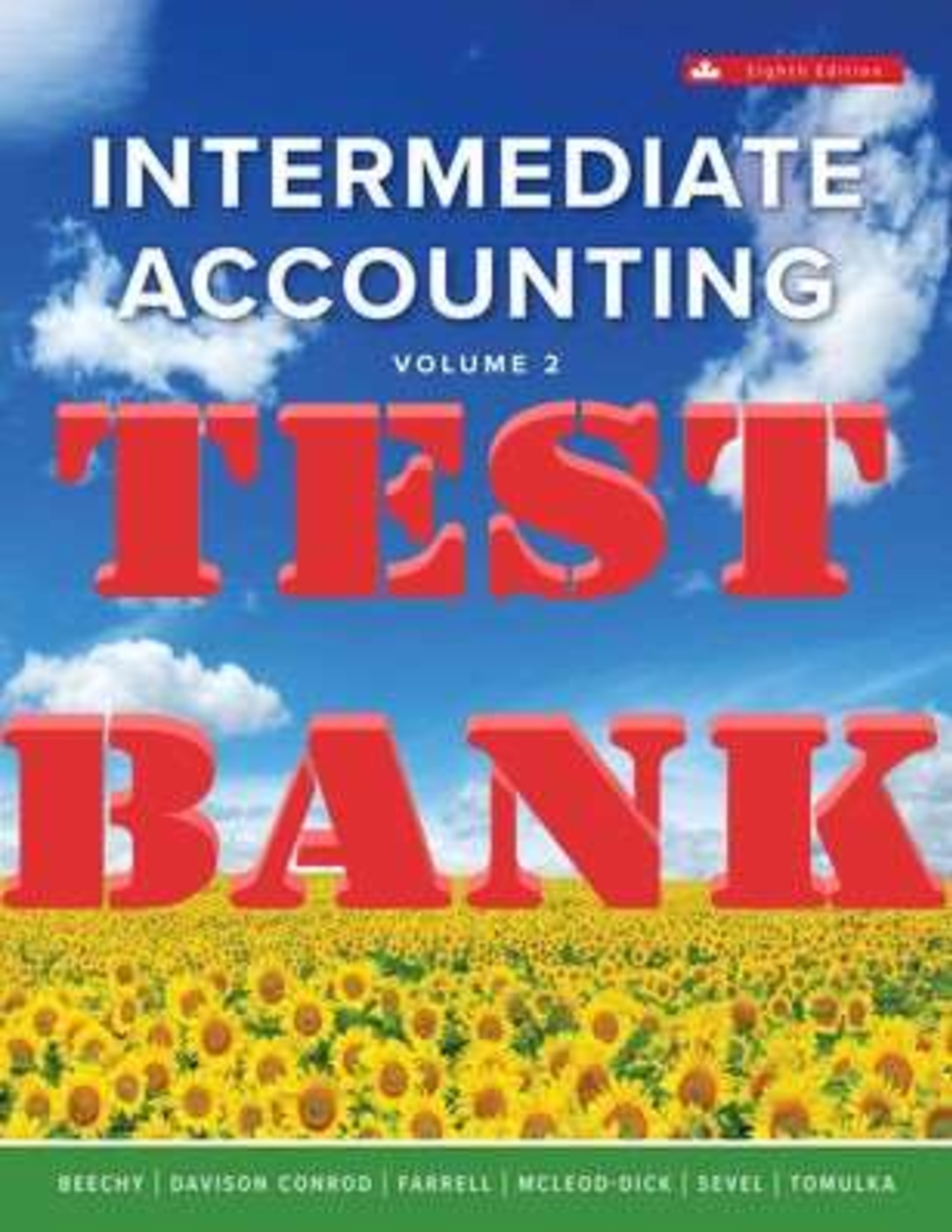
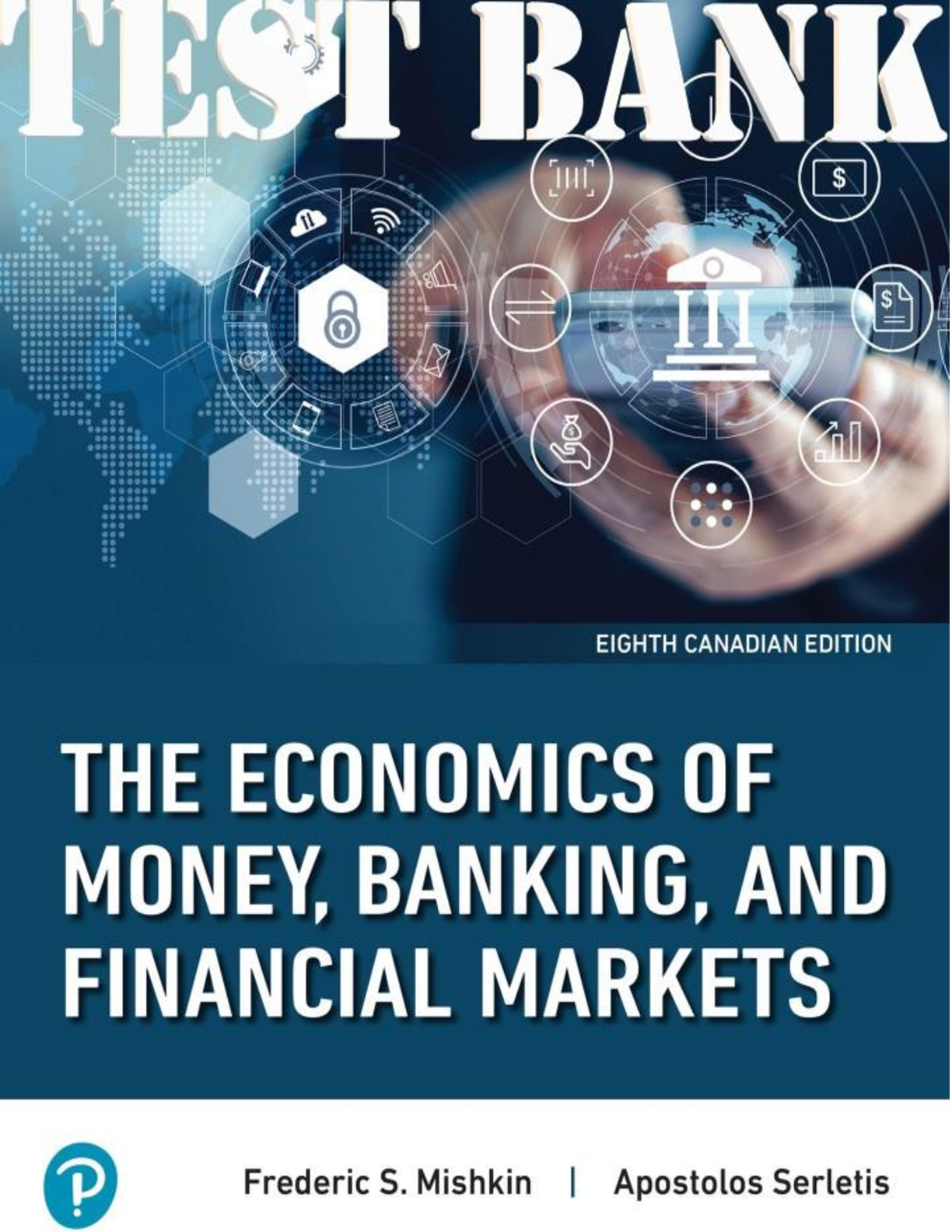
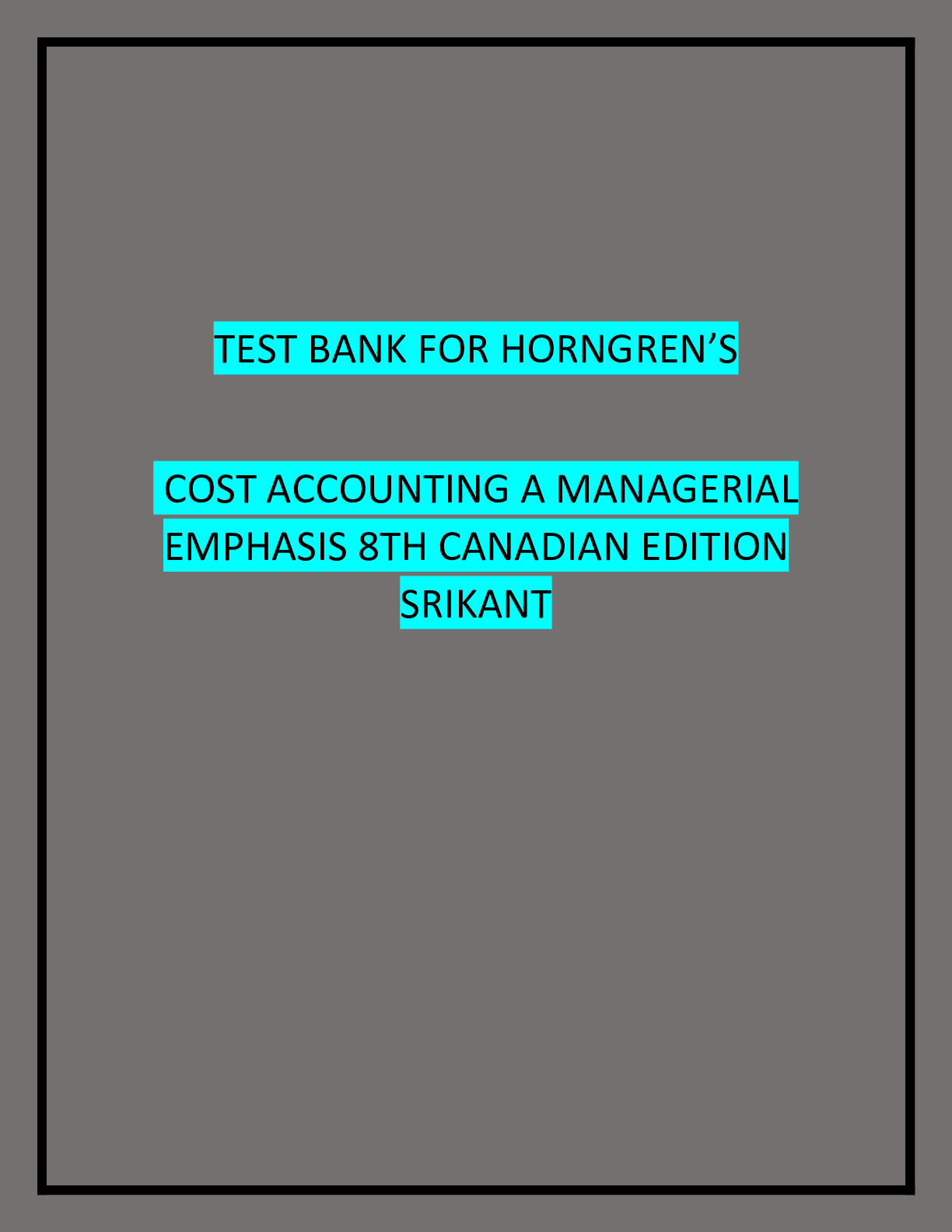
.png)
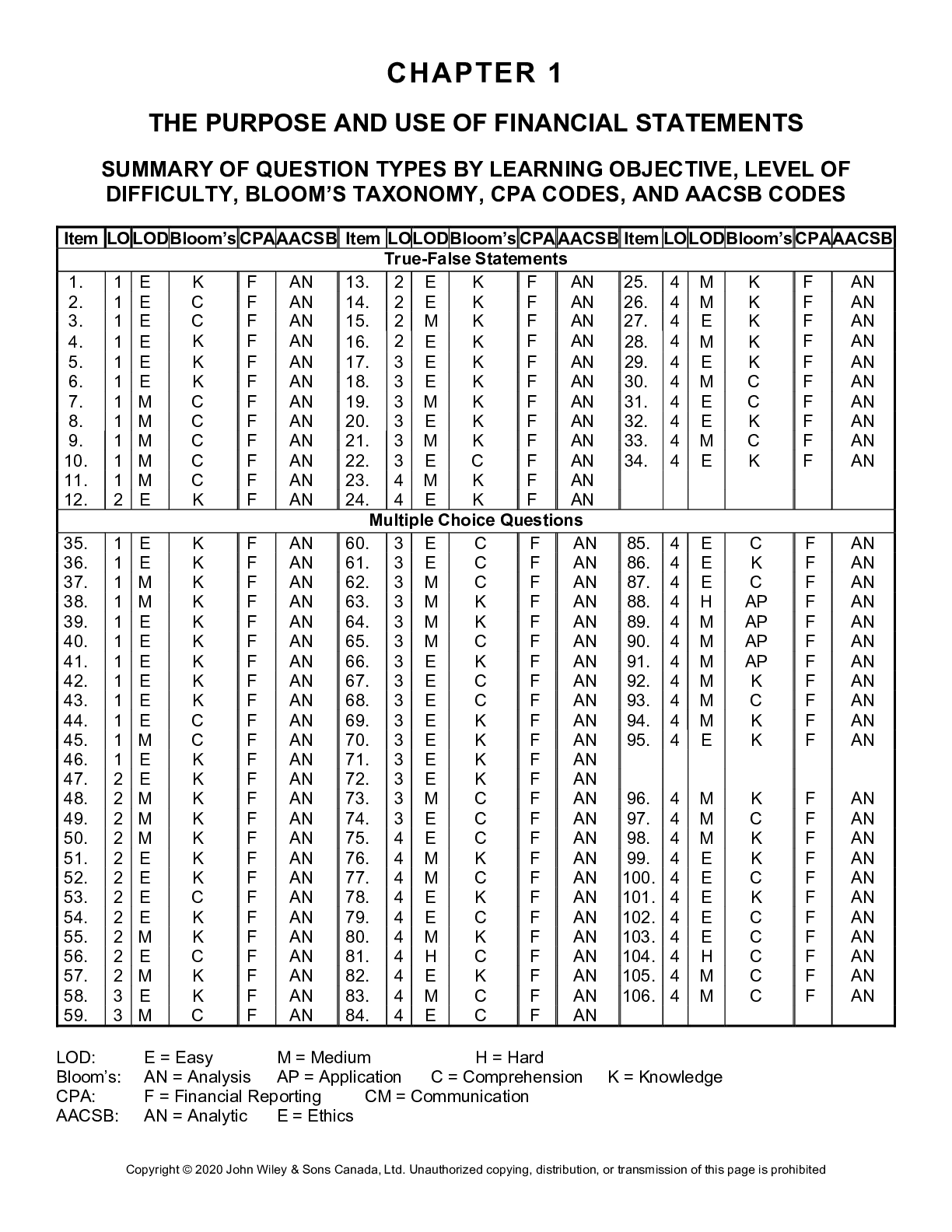

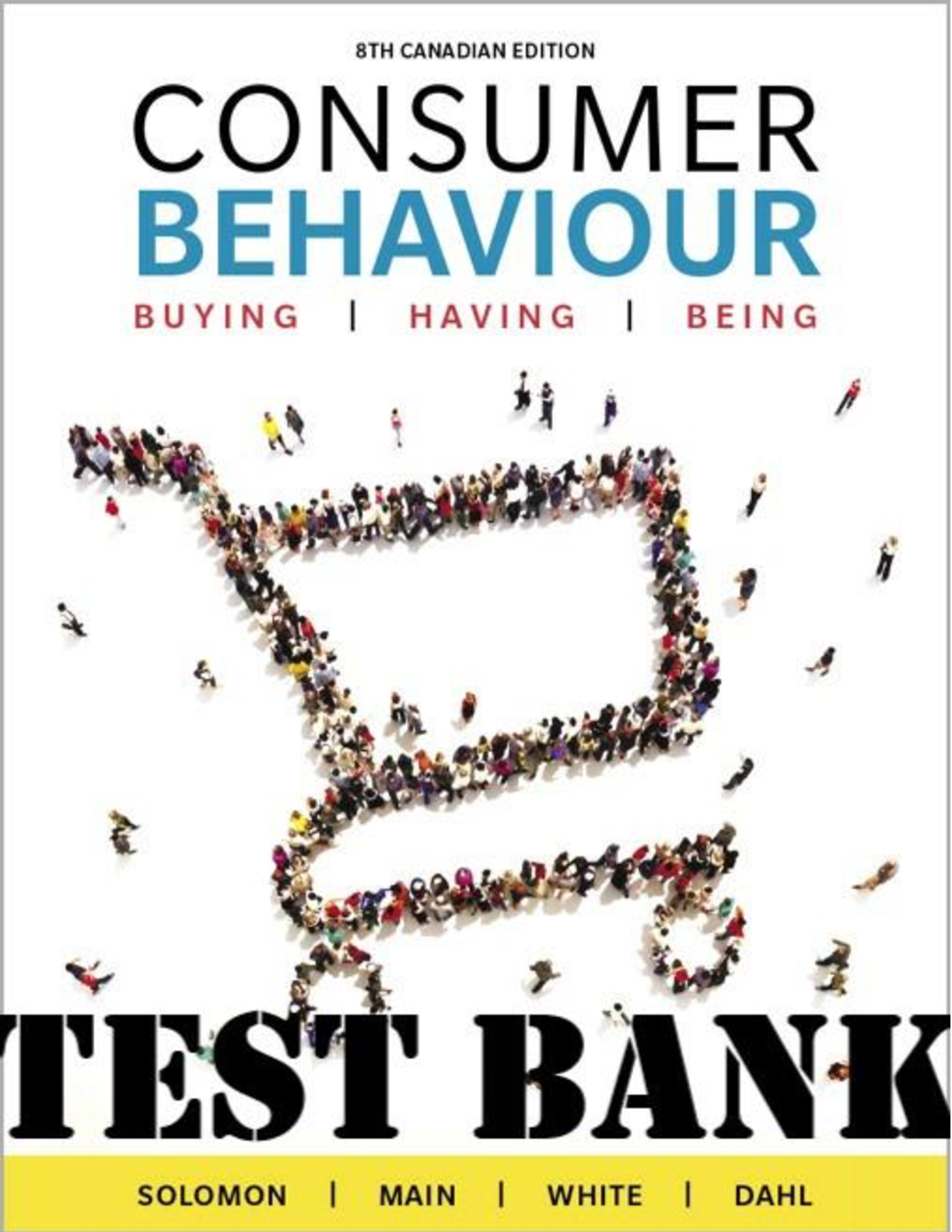

, 8th Canadian edition, 8e Beechy, Davidson-Conrod, Farrell, McLeod-Dick, Tomulka, Sevel.png)
, 8th Canadian edition, 8e Beechy, Davidson.png)

